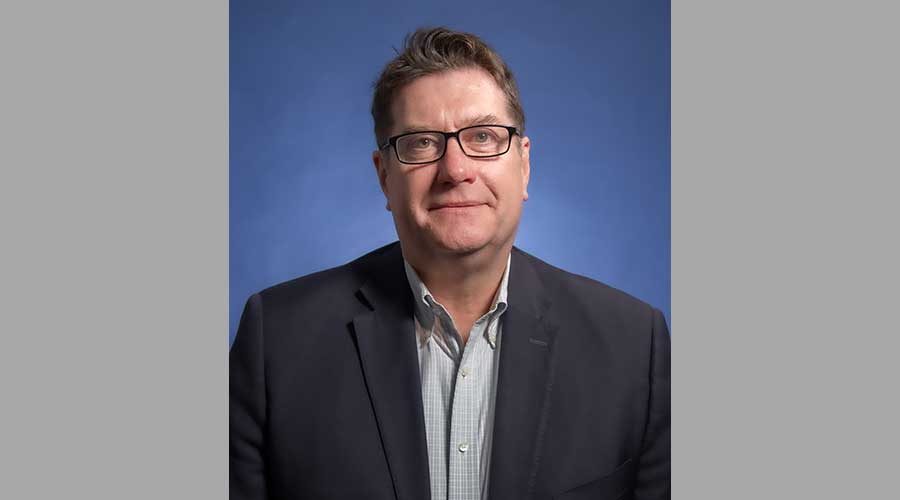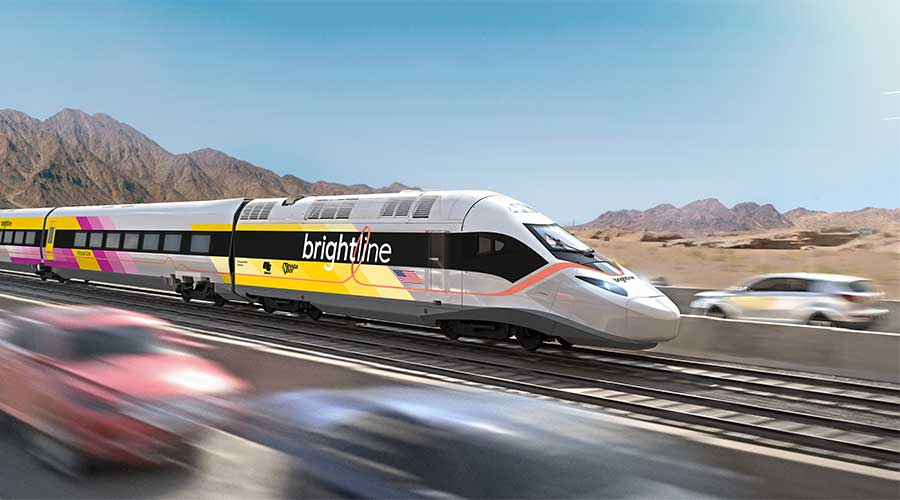Stay updated on news, articles and information for the rail industry
May 2015
Rail News: Passenger Rail
Utah Transit Authority sets its sights on new partnerships and improved service
By Daniel Niepow, Associate Editor
Utah’s burgeoning population shows no sign of slowing anytime soon, and plans to bolster rail transit in the Wasatch Front — the state’s most populous region — have grown right alongside recent population booms. In 2008, as the U.S. Census Bureau reported that Utah’s population was growing faster than that of any other state, the Utah Transit Authority (UTA) began work on an ambitious plan to construct 70 miles of rail in the Wasatch Front, currently home to around 80 percent of the state’s roughly 2.9 million residents. The area comprises a 120-mile strip of land that includes Salt Lake City and a host of smaller towns and suburbs.
Known as FrontLines 2015, the project called for the construction of four new routes along the UTA’s existing TRAX light-rail system in addition to building a 44-mile commuter-rail line from Provo to Salt Lake City. UTA officials expected it to be a seven-year, $2.8 billion project, but it finished up roughly $300 million under budget and two years ahead of schedule.
The opening of the system’s 3.8-mile Draper TRAX Line in August 2013 brought the project to a close.
With construction of FrontLines behind them, UTA officials have since set their sights on improving customer service and developing more partnerships at the public and private level.
“More partnerships are the future to our success,” says Mike Allegra, UTA’s president and chief executive officer. “We have to be more creative than we’ve ever been.”
Those relationships helped agency execs push forward with FrontLines, even during the 2008-09 recession, he adds.
An emphasis on partnership building
“We felt strongly that we made a commitment to deliver [the project], and we needed to figure out new ways of getting this done,” says Allegra, who succeeded longtime CEO John Inglish in 2012.
Seeking out appropriate grants and working cooperatively with federal agencies contributed to the success of FrontLines and earlier projects, Allegra says.
In the past 10 years, the agency received more than $1.7 billion in federal grants. Some of the proceeds provided $544 million to help build the Mid-Jordan and Draper TRAX Lines as part of FrontLines 2015. The sum equates to 25 percent of the entire project.
The remaining project’s lines received financial backing from local funding, part of which came from a sales tax increase approved by voters in 2006.
“The public paid for this,” Allegra says. “They voted, and our job was to continue to instill trust that we could do this.”
The federally funded lines finished at the same time as locally funded ones — a fact that, for Allegra, underscores the utility of tapping into federal resources.
“There isn’t an onerous component to working with the federal agencies,” he says of the Federal Transit Administration (FTA) and the U.S. Department of Transportation. “They were true partners and champions for us.”
Concurrent with its FrontLines project, UTA also squeezed in construction of its “S Line” streetcar system, which opened in December 2013. Running two miles through Salt Lake City’s Sugar House district, the $55 million project was funded in part by a $26 million Transportation Investment Generating Economic Recovery (TIGER) II grant awarded in 2010.
The state’s first modern streetcar, the S Line utilizes the same Siemens S70 cars used on UTA’s TRAX light-rail lines, although they’re operated as single units at lower speeds.
Collaborating with UTA's Board of Trustees
A cooperative board allowed agency execs to work without much red tape, which helped expedite the project’s construction. The board gave Allegra and his predecessor the authority to execute all contracts, provided they were within budget.
“[The board] created a governance model that told us what their expectations were, but not necessarily how to do our business,” Allegra says.
The board includes the state’s Department of Transportation Commissioner Dannie McConkie, University of Utah city planning professor Keith Bartholomew and Utah State Rep. Gregory Hughes, who also serves as speaker of the state’s House of Representatives.
Having those allies in government certainly didn’t hurt the UTA’s cause. In written testimony to the U.S. House Transportation and Infrastructure Committee in December 2013, Hughes lauded UTA’s accomplishments and called for Congress to restore the FTA’s capital investment programs that allocate funds to state and local governments for mass transit systems.
Developing private-sector relationships
Building strong partnerships didn’t stop with public entities. UTA provided shared office space to its contractors to help strengthen working relationships.
“Everybody worked in the same building,” Allegra says. “All of them jumped in and did it with integrity and delivered as promised.”
Kiewit Corp., which won a $352 million contract to lead construction of the Mid-Jordan and Draper lines, was one of the contractors for the FrontLines 2015 project. Building the track presented several challenges with both local communities and businesses, says Spencer Cruse, who served as Kiewit’s engineering manager on the two projects. To navigate those potential obstacles, Kiewit officials worked with UTA and local stakeholders.
“Our team’s relationship with UTA was critical,” says Cruse, whose firm was co-located at UTA sites throughout the FrontLines project. “[UTA officials] roll up their sleeves with the designers and contractors to work together to mitigate and even eliminate these challenges.”
For example, construction of the Draper Line, which was being built near or within residential areas, required substantial cooperation between the UTA and community stakeholders. The firm worked with UTA to keep residents informed of construction work, and mandated that vehicles be shut down at night to mitigate noise pollution, Cruse says. Kiewit contractors also had to be mindful of a nearby multi-use trail that remained open to residents throughout the construction period.
This sort of collaboration meshed with UTA’s overarching goals with the FrontLines project, Allegra says.
“This isn’t just about building rail,” he says. “This is about community impacts. This is about business. This is about keeping roads open.”
A greater level of financial accountability
Now, about two years after the completion of FrontLines, Allegra has a host of achievements to look back on.
“You almost half to pinch yourself because of what we’ve been able to accomplish,” he says.
But a larger, more robust transit network still means a greater degree of accountability to the region’s main stakeholders: taxpayers.
The agency began to feel that mounting pressure following a legislative audit in August 2014, which called into question UTA’s compensation reporting practices and certain business agreements, and generated a series of critical reports by local news media at the time.
UTA officials worked to remedy the problems. Per the audit’s recommendations, the agency began following stricter bookkeeping and benchmarking practices for salaries, and commissioned its own internal review of compensation that was released in March.
Following the audit, UTA’s board capped bonuses for administrative employees at $7,500. Now, any bonus that exceeds $8,000 must obtain board approval. Previously, bonuses had run as high as $30,000.
It was a move that made sense as the agency shifted from a period of billion-dollar expansion projects to a simpler, more operational mode, Allegra says.
UTA officials also decided to adjust executive-level retirement benefits, which previously had been above market norms, the internal review found.
In addition to keeping stricter tabs on financial practices, the agency is continuing to work on improving customer service, Allegra says.
“What the public sees on the street — what they get to use everyday — is really what they’re going to judge us by,” he says.
In its 2020 strategic plan, UTA lays out a six-pronged customer-focused strategy, which includes plans to cut the average trip time by 25 percent, among several other service-related goals.
UTA: Improving rail service
Updates to existing fare policies figure into the agency’s customer service strategies, as well.
UTA is considering implementing a distance-based fare plan, which is already in use on its FrontRunner commuter line, says UTA spokesman Remi Barron. New electronic readers across the network allow riders to “tap on and off” with fare cards at the beginning and end of their journeys, which means the agency can charge riders only for the distance they actually traveled versus a flat rate.
The readers also log anonymous data about travelers’ riding habits, which the agency analyzes in an attempt to improve routes based on usage.
UTA is in the midst of upgrading its Wi-Fi services, which the agency provides free to FrontRunner riders.
Directly engaging with riders on social media is a service focus, too. By providing real-time updates on Twitter, agency officials can easily assuage concerns about train delays, says Barron.
“That’s big to somebody that relies on us to make it to that meeting on time,” he adds.
The agency logged more than 11,000 new followers on Facebook and Twitter over a two-year period, according to UTA’s 2013 strategic plan. As of April 27, UTA’s Twitter account boasted more than 16,000 followers, and its Facebook page had garnered about 9,200 “likes.”
Transit-oriented developments underway
As UTA moves forward, agency officials plan to continue utilizing the formula that has, in Allegra’s opinion, worked in the past: developing strong partnerships.
To that end, UTA officials have begun implementing a series of transit-oriented developments (TOD) in the Wasatch Front. Two projects are now under construction: one in the suburb of West Jordan and another in the city of Sandy.
The developments call for using land around rail stations for a host of mixed-use projects. For example, the Jordan Valley TOD project comprises 30.2 acres that eventually will house 1,400 residential units, 83,000 square feet of office space, structured parking and 35,000 square feet of retail and restaurant space.
Groundbreaking for UTA’s East Village development in downtown Sandy took place in September 2014. The agency’s first TOD project, it will contain more than 1.4 million square feet of development, including a 271-unit apartment complex. The project is slated for completion in late 2015, with pre-leasing beginning this fall.
Increasing rail ridership
For its part, UTA provides developers with land at the station sites for development, Barron says. The projects are aimed at increasing revenue for the system in the form of more ridership. They also have the potential to improve air quality as residents opt for transit over cars, he says.
“We hope that these projects will serve as an example to the community and other developers of the types of projects that can be established within proximity of our transit stations,” Barron says.
The agency plans to begin another TOD project in Clearfield later this year, and developers are performing market studies at six additional sites, as well, says Barron.
But the success of these developments depends on UTA providing quality service for an increasing ridership.
Over the past 15 years, ridership has nearly doubled to 45 million boardings in 2014. The system’s TRAX light-rail lines alone carry roughly 64,000 passengers per weekday.
For Allegra, ridership trends like these exemplify the region’s major transportation needs. He also thinks the UTA’s accomplishments could serve as a model for future transit systems nationwide.
“There’s a tremendous thirst and appetite for more transit,” he says. “We’re on the cusp of a transit renaissance in this country.”
Keywords
Browse articles on Utah Transit Authority UTA Mike Allegra FrontLines 2015 John Inglish passenger rail transit oriented development TIGER grants Kiewit Construction Kiewit public private partnership Gregory Hughes Dannie McConkie Federal Transit Administration Board of TrusteesContact Progressive Railroading editorial staff.


 2025 MOW Spending Report: Passenger-rail programs
2025 MOW Spending Report: Passenger-rail programs
 Gardner steps down as Amtrak CEO
Gardner steps down as Amtrak CEO
 Guest comment: Oliver Wyman’s David Hunt
Guest comment: Oliver Wyman’s David Hunt
 Women of Influence in Rail eBook
Women of Influence in Rail eBook
 railPrime
railPrime







